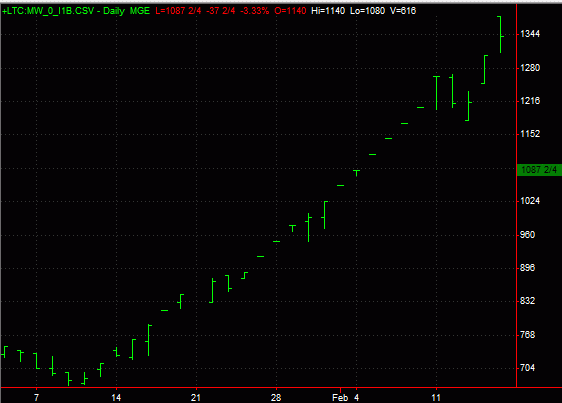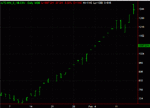Mathemagician
Established member
- Messages
- 603
- Likes
- 130
Certain markets, especially futures, have limits on the maximum and minimum prices at which they can trade on a given day. Typically these limits are N points above/below the prior day's close. Because of this, there are days where the market will open at the upper limit and stay there all day, or at the lower limit and stay there all day. Days where this happens are called "locked limit days". There is very little volume on those days and no hope of getting an order filled, so a trading system must ensure that it does not count orders as filled on locked limit days in a backtest or its results cannot be reproduced in reality.
As an example, here is a chart of a series of recent limit up days in Minneapolis Wheat:

I cannot recommend a starting capital amount that would be appropriate for you, since this depends totally on your specific goals and constraints. FWIW, I set the minimum account size for a conservatively leveraged individually managed account in a program such as this in a restricted set of markets at $250k and the minimum for the full program is $2m. There are, of course, other avenues with a lower capital requirement which one could pursue if one were sufficiently motivated to trade a program such as this.
jj
As an example, here is a chart of a series of recent limit up days in Minneapolis Wheat:
I cannot recommend a starting capital amount that would be appropriate for you, since this depends totally on your specific goals and constraints. FWIW, I set the minimum account size for a conservatively leveraged individually managed account in a program such as this in a restricted set of markets at $250k and the minimum for the full program is $2m. There are, of course, other avenues with a lower capital requirement which one could pursue if one were sufficiently motivated to trade a program such as this.
jj
Attachments
Last edited:

